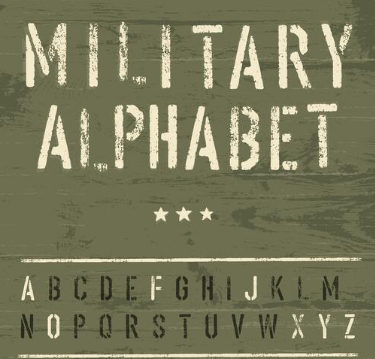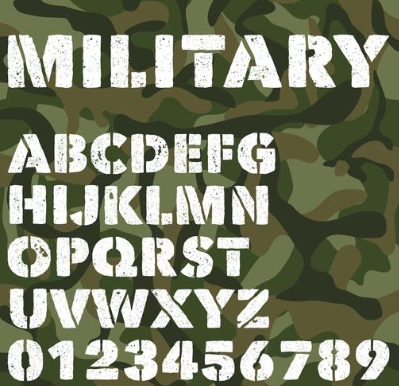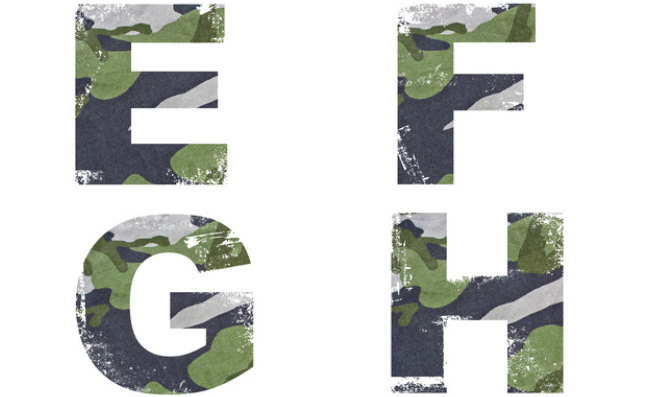The military alphabet, commonly encountered in war movies, video games, and radio communications, serves a crucial role in facilitating precise and unambiguous communication across diverse contexts. Despite its prevalent usage, many remain unfamiliar with the origins and significance of the military phonetic alphabet. This article aims to unravel the history, components, and purpose of this communication tool, shedding light on its global importance.

Table of Alphabet and Code Words
For quick reference, a table detailing each letter of the alphabet and its corresponding code word in the military alphabet is provided:
| Letter | Code Word |
|---|---|
| A | Alfa / Alpha |
| B | Bravo |
| C | Charlie |
| D | Delta |
| E | Echo |
| F | Foxtrot |
| G | Golf |
| H | Hotel |
| I | India |
| J | Juliet |
| K | Kilo |
| L | Lima |
| M | Mike |
| N | November |
| O | Oscar |
| P | Papa |
| Q | Quebec |
| R | Romeo |
| S | Sierra |
| T | Tango |
| U | Uniform |
| V | Victor |
| W | Whiskey |
| X | Xray |
| Y | Yankee |
| Z | Zulu |
History of the Military Alphabet
Before the inception of the modern military alphabet, the International Telecommunication Union (ITU) established the first internationally recognized spelling alphabet in 1927. Substantial modifications were made in 1932, and these changes were adopted in civil aviation until the outbreak of World War II. Both the British and American military devised their own versions – the Royal Air Force (RAF) and the Joint Army/Navy Phonetic Alphabet. In 1941, the American alphabet transitioned into Able Baker, a system adopted by all military branches. The British aligned their alphabet with Able Baker in 1943.
ICAO Phonetic Alphabet
The International Civil Aviation Organization (ICAO) Phonetic Alphabet emerged in 1956, unifying the British and American systems. Prior to this, the Ana Brazil alphabet addressed unique English sounds in Latin America. The NATO Alphabet, widely recognized today, resulted from a draft presented by the International Air Transport Association (IATA) to the ICAO in 1947.
| Letter | Code Word |
|---|---|
| A | Alfa |
| B | Bravo |
| C | Charlie |
| D | Delta |
| E | Echo |
| F | Foxtrot |
| G | Golf |
| H | Hotel |
| I | India |
| J | Juliet |
| K | Kilo |
| L | Lima |
| M | Mike |
| N | November |
| O | Oscar |
| P | Papa |
| Q | Quebec |
| R | Romeo |
| S | Sierra |
| T | Tango |
| U | Uniform |
| V | Victor |
| W | Whiskey |
| X | Xray |
| Y | Yankee |
| Z | Zulu |
Revised Able Baker Alphabet
The original Able Baker system encountered challenges, prompting modifications in 1956. Changes to five words aimed at enhancing clarity, particularly under poor radio conditions. This revised version, mandated in 1959, remains in use today.
| Letter | Code Word |
|---|---|
| A | Alfa |
| B | Bravo |
| C | Coca |
| D | Delta |
| E | Echo |
| F | Foxtrot |
| G | Golf |
| H | Hotel |
| I | India |
| J | Juliet |
| K | Kilo |
| L | Lima |
| M | Metro |
| N | Nectar |
| O | Oscar |
| P | Papa |
| Q | Quebec |
| R | Romeo |
| S | Sierra |
| T | Tango |
| U | Union |
| V | Victor |
| W | Whisky |
| X | Extra |
| Y | Yankee |
| Z | Zulu |
Modern Military Phonetic Alphabet
The modern version, initiated in 1959 by the ICAO and globally mandated in the same year, is widely accepted. This iteration includes code words such as Alfa, Bravo, Charlie, and so forth.
Reasons for Changes
Modifications in the military alphabet were introduced to address linguistic challenges and resolve similarity issues between code words. The overarching goal was to create a universal alphabet suitable for diverse languages.
Name Changes
Over the years, the alphabet underwent name changes, reflecting the organization that modified or utilized it the most. This evolutionary process includes transitions from the International Radiotelephony Spelling Alphabet to the NATO Alphabet.
Beyond the NATO Alphabet
The military alphabet extends beyond letters to include numbers. To ensure clarity in communication, pronunciations of numbers were modified:
- 1: Wun
- 2: Too
- 3: Tree
- 4: Fower
- 5: Fife
- 6: Six
- 7: Seven
- 8: Ait
- 9: Niner
- 0: Zero
The Need for the NATO Alphabet
Using standard alphabet letters increases the chances of misunderstanding messages, especially under challenging conditions. The NATO Alphabet, with clear and distinct code words, ensures accurate communication even in noisy or chaotic situations.
To conclude, born out of necessity, the military phonetic alphabet has undergone numerous changes, evolving into the NATO Alphabet, a system recognized and utilized globally. Its role in armed forces, civil navigation, maritime operations, and law enforcement agencies across hundreds of countries highlights its enduring importance for effective and unambiguous communication. The NATO Alphabet’s universal application underscores its significance in overcoming language barriers and ensuring clarity in critical communication scenarios.

Questions and Answers
Why was the military phonetic alphabet created?
The military phonetic alphabet was created to facilitate clear and precise communication, especially in challenging conditions such as war, where traditional letters might be misheard or confused.
How did the British and American military develop their own alphabets?
The British initiated the RAF alphabet, while the American forces used the Joint Army/Navy Phonetic Alphabet, leading to a need for unification.
What prompted the revisions in the Able Baker system?
The revisions aimed at improving clarity, especially under poor radio conditions, addressing challenges in the original Able Baker system.
Why did the ICAO Phonetic Alphabet emerge?
The ICAO Phonetic Alphabet emerged to unify the British and American systems, providing a standardized and universal approach to radio communication.
How does the military alphabet address linguistic challenges?
Changes in the alphabet were made to accommodate sounds common in various languages, ensuring clear communication across diverse linguistic contexts.
What is the significance of the NATO Alphabet?
The NATO Alphabet ensures accurate communication by using clear and distinct code words, reducing the chances of misunderstanding messages, even in noisy or chaotic situations.
Why did the military alphabet extend to include numbers?
Numbers were included to enhance clarity in communication, with modified pronunciations to avoid confusion in critical situations.
What were the challenges in the original Able Baker system?
Some words were hard to understand under poor radio conditions, and certain words sounded similar, leading to modifications for improved clarity.
How has the military phonetic alphabet evolved over time?
The alphabet has undergone several name changes and revisions, adapting to the needs of different organizations and improving its effectiveness.
Why is the NATO Alphabet still in use today?
The NATO Alphabet is still in use due to its universal acceptance and effectiveness in overcoming language barriers, ensuring clear communication globally.

